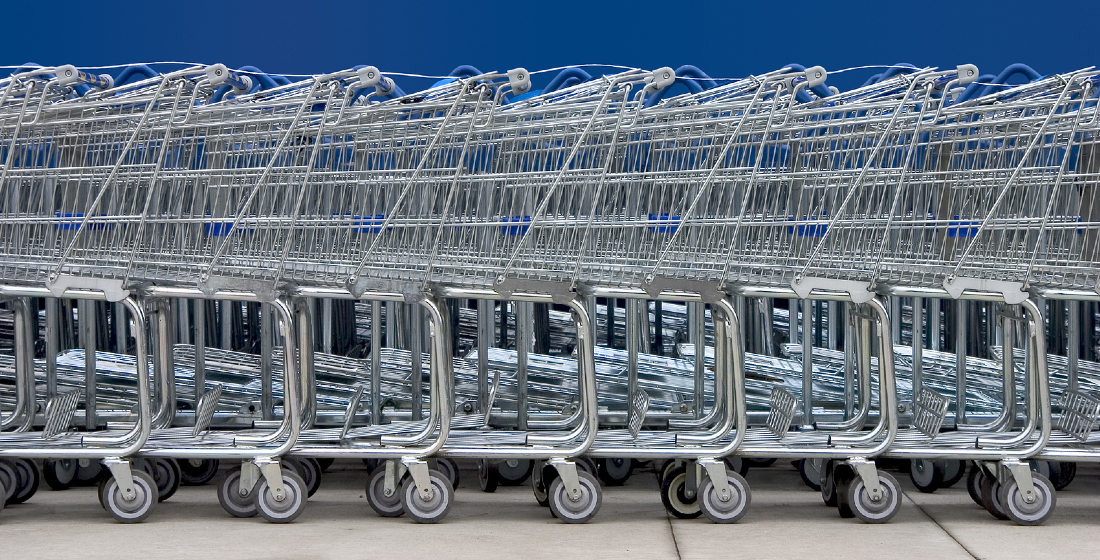ECA league tables 2023: Pushing the envelope
With the recent release of TXF Intelligence’s export finance lender league tables, get the breakdown on the most active ECAs in the market. Read on to find out the biggest sectors and regions for every ECA after a record-breaking year.

With the publication of TXF’s export finance lender league tables in February, data report season is officially underway. Watch out for more information on the biggest trends across 2023 with the release of our full year analysis of the export finance market.
In the meantime, TXF Intelligence has crunched the numbers on export finance activity in 2023 to bring you the rankings on the most active ECAs of the year. The full table, as well as more information on the industry’s top lenders, MLAs and lawyers, is available to subscribers through this link.
These rankings should not be seen as a list of winners and losers in export finance. 2023 was a remarkable year for the industry as a whole, and the rising tide has been driven by all of the ECAs that feature in TXF’s database. There is very little to separate many of the most active ECAs in terms of overall deal volume, suggesting that competition in the market is healthy.
Rather, this information should be used as a point of analysis alongside the context of the year’s biggest trends and news stories. Untied lending, for example, has continued its recent rise among European ECAs but this form of financing has been popular in Asia for decades. The breakdown will reveal what sectors and regions that ECAs are focused on, as well as the most popular financial structures.
SACE setting standards
At the top of the table, SACE leads the way by a sizeable margin. The Italian ECA completed 117 deals over the course of the year for a total of $24.1 billion, or roughly 16% of overall market volumes. JBIC sits in second with $18 billion over 73 deals.
For additional context, in 2022 SACE delivered $9.5 billion over 44 deals. Prior to 2023 its record for activity on TXF’s database came in 2017, when SACE completed $14 billion in transactions. The growth has been remarkable, and it is part of a conscious effort on SACE’s part to expand its support and product offering.
The Push Strategy is both well-established and well-regarded in the industry. This facility, which offers untied medium to long term loans that support Italian supply chains and procurement, is a development of COVID-era policies which mandated ECAs to support corporates on more flexible terms. In this spirit, SACE has delivered everything from a €2 million deal for an Italian paper company to an $850 million deal for Fincantieri, the shipbuilder, as well as a number of untied facilities for international commodity traders.
SACE is not the only ECA to make this leap – notably, Euler Hermes has its UFK Guarantees scheme for untied loans supporting raw materials imports. UKEF has its Export Development Guarantee, which in 2023 was tapped by both British Airways and EasyJet for sizeable deals. SACE, however, has led from the front in terms of the breadth and scale of its commitments.
The list of the top six ECAs in 2023 by deal volume is completed by JBIC, K-Sure, UKEF, Kexim and Bpifrance. JBIC sits comfortably in second with $18 billion but the remaining four ECAs are clustered between $11 billion and $15 billion of activity.
It should come as no surprise that the Asia ECAs feature so highly – they regularly feature among the most active agencies in the market and JBIC has topped this table on more than one occasion. JBIC’s ability to blend direct lending at large volumes with guarantees is unique in the export finance industry. Its largest deal of 2023 was the $5 billion deal for AMNS Luxemburg, a joint venture between Arcelor Mittal and Nippon Steel Corporation for an integrated steel mill in India. JBIC contributed $3 billion of this sum.
By contrast on the $3.3 billion Hai Long offshore wind project, JBIC offered both lending and guarantee services alongside NEXI and four other ECAs.
Developed markets and defence on top
In terms of regions, the picture changes. In Europe, where much of the growth in export finance activity in 2023 was recorded, UKEF rises to second place with $9.2 billion. Its total volumes reached $12.5 billion. This focus on developed markets centred around Ineos’ latest petrochemicals deal for the Project ONE facility in Belgium and a $2.5 billion deal for Bank Gospodarstwa Krajowego, the Polish development bank which will likely support a defence export agreement between the UK and Poland.
Bpifrance recorded just $1.2 billion of its $11 billion total in Europe. The French ECA distributed its support over a number of markets, but its biggest volumes were reserved for Asia Pacific, where two deals were completed for $5.6 billion. The guarantees were associated with another major defence deal between France and Indonesia. These deals made Bpifrance the most active ECA in the region by volume – as a point of contrast, JBIC completed 35 deals for $4.2 billion, with a large number of small facilities for Japanese exporters operating in manufacturing and transport in south-east Asia.
Defence will likely remain a hot topic for the interest in 2024 and demand for armaments will not let up in the current geopolitical environment. For ECAs, it is a question of whether they can and should devote significant capacity to these deals, given the size and complexity of the exports seen in 2023. As a case in point, Kexim has recently secured additional investment from the Korean government but its involvement in a number of mega-deals with Poland effectively exhausted its lending limits.
If Kexim’s troubles offer a cautionary tale, then it is likely to go unheeded – Australia has announced plans to increase its participation in the defence exports industry, with Export Finance Australia set to provide financial solutions through a Defence Export Facility.
Euler Hermes sits in seventh. The German ECA’s most high-profile deal was the NEOM Green Hydrogen project financing, but its actual involvement was limited to $650 million out of the total $6.2 billion. Its biggest commitments were reserved for green industry - $1.3 billion for the H2 Green Steel project in Sweden, which will likely establish a path for more European hydrogen projects in future, and $1.6 billion for the Caculo Cabaca Hydroelectric facility, located in Angola. The deal featured an impressive 25-year tenor. Expect to see more ECAs pushing the envelope on repayment terms in the wake of the modernisation of the OECD Consensus.
Unsurprisingly, Afreximbank is the most active institution in Africa with $6.8 billion over 27 deals. As with previous years, European ECAs largely confined themselves to a handful of deals rather than increasing their exposures to the region. While total export finance volumes did see a modest increase to $19 billion from $15 billion, demand for new infrastructure continues to outstrip ECA capacity in the world’s most impoverished continent.
Afreximbank’s activity has largely been confined to the oil & gas sector – in fact, it is the only ECA to have supported an oil & gas project in Africa in 2023. This included a major $3 billion direct loan to the Nigerian National Petroleum Corporation that was intended to boost foreign exchange liquidity and stabilise the value of the naira.
ECA support for the oil & gas industry as a whole was limited once again. SACE tops this list once again with $5.6 billion in support over 11 deals. This figure is largely comprised of support for oil infrastructure, such as the FPSO Mero 4, as well as guarantees for Gunvor, Vitol and Mercuria that secured imports of natural gas to Italy. The $3.1 billion Balikpapan refinery upgrades project stands out as the most significant oil & gas project of the year, featuring support from SACE, US Exim, Kexim and K-Sure.
On the renewables front, SACE ranks ninth, with just $597 million of activity. JBIC and Eksfin, the Norwegian ECA, issued extensive support for a number of offshore wind projects. The industry has suffered under the pressure of rising material costs and record levels of ECA support were crucial to dealmaking in 2023. Offshore wind accounted for well over half the total renewables volumes at $18.7 billion, with deals for Yeu-Noirmoutier, Moray West and Hai Long to name a few, as well as an extended financing package for the troubled Yunlin project.





